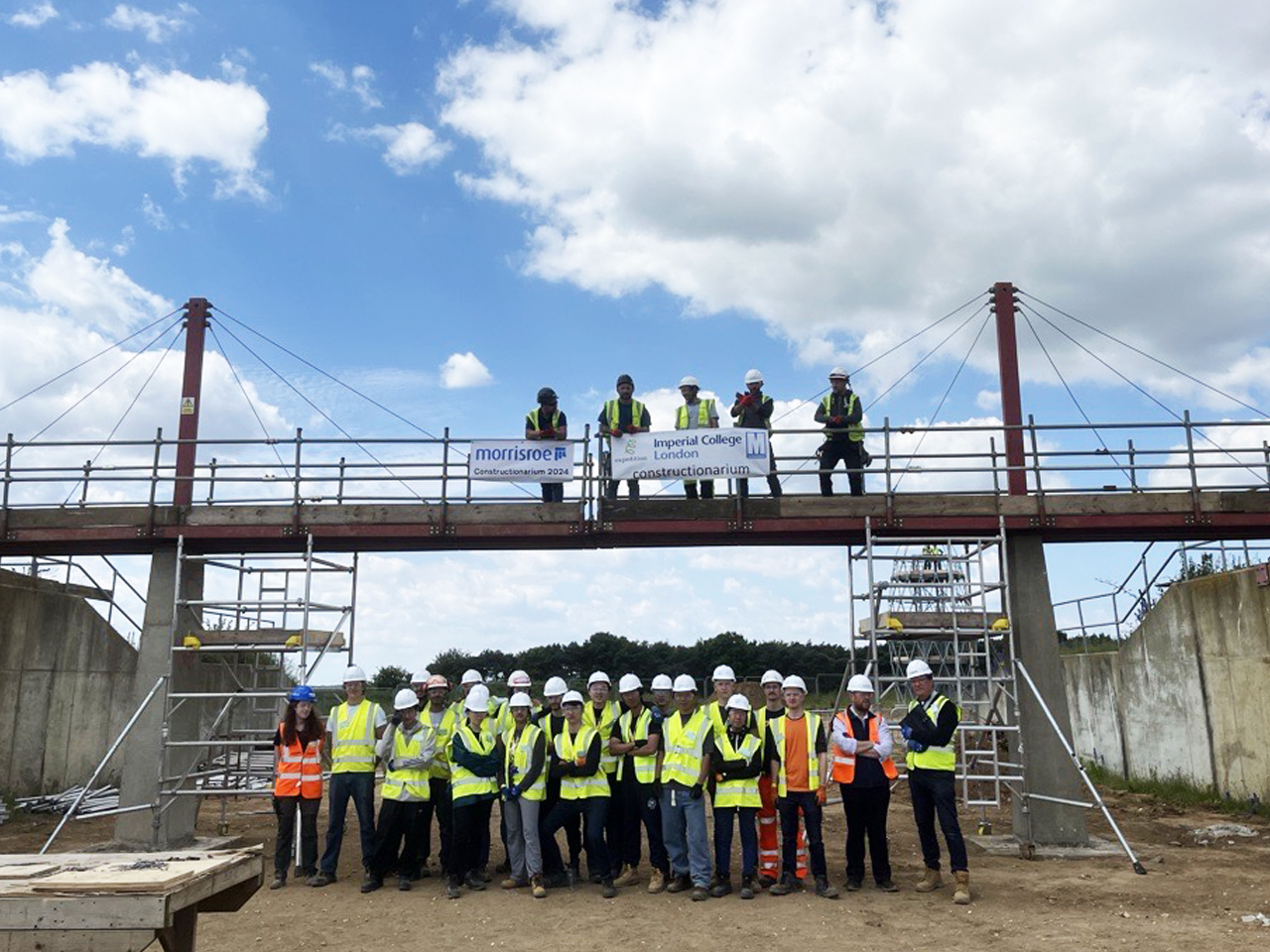News
Bridging Theory and Practice at Constructionarium 2024

Jono Dixon, a Structural Engineer for Expedition Engineering, took on the role as a Design Consultant for this year’s Constructionarium at the Construction Industry Training Board (CITB) in Bircham Newton, Norfolk. Here, Jono highlights the benefits of experiential learning as he worked alongside other industry professionals to support over 200 second- and third-year students from Imperial College London as they constructed replicas of existing structures across the world:
Established by Stef Stefanou’ (former Chairman of John Doyle Construction) and Chris Wise (Expedition Engineering) in 2003, Constructionarium aims to bridge the gap between the theory of engineering taught at university and the practical skills which are needed in industry.
Growing from a pilot site in West London to the bespoke 19-acre training facility today, several universities across the country (and the world!) attend Constructionarium each year, with support by industry professionals from Expedition, Mace, Morrisroe, and LSY Engineering Consultants Ltd.
Turning theory into practice
The increase in understanding of how things are built has led to an increased level of construction knowledge in Graduate Engineers, and it was a pleasure to meet so many like-minded and driven students as they got stuck into the construction of structures, including:
- Kingsgate Bridge (Durham, UK)
- Brewers Wharf Bridge (Leeds, UK)
- Millau Viaduct (Aveyron, France)
- Ravenspurn Oil Rig (North Sea)
- The Gherkin (London, UK)
- Don Valley Stadium (Sheffield, UK)
- The Pavillion
My role as a Design Consultant required supporting the groups in their decision-making processes, asking questions around quality of their construction and prompting discussions about the effects of lower quality of work, relating to assumptions made in design.
For example, we had several cases of honeycombing in concrete that became obvious after the removal of shuttering. This led to discussions on the lack of protection for reinforcement from water ingress and reduced concrete capacity in compression. To find a solution, I encouraged the students to consider using grout to repair the area, preventing water ingress and ensuring that the concrete was still strong enough. It was great to see their understanding develop as they related this to what they had learned in lectures.


Reflecting on carbon
With a focus on the effect of design in the built environment becoming ever more important in my role as a Structural Engineer, it was interesting to evaluate these existing structures and consider how they could be redesigned based on best practice in 2024 and beyond.
One area of reflection was on the cubic meters of concrete used for these builds, and the increased efforts we are making across the construction sector to make more carbon-efficient designs. It will be interesting in the next few years to see some of these constructions, such as the Brewery Wharf, alternating the mass concrete foundation where it may be possible to gain sufficient anchoring of the cables from backfilling over a concrete pad instead.
Considering MMC or offsite production to minimise waste in this controlled environment opens the door to experiment working with low carbon alternatives. This means emerging professionals are as familiar with the similarity and differences with traditional materials – and can then go on and champion them in their working lives.
Learning in action
Constructionarium is an excellent programme to expose students to existing construction methods and the practicalities of turning designs into reality. It has allowed a whole generation of young engineers to be better equipped for a career in engineering and higher standards of technical drawings and safety.
I’m envious that I didn’t get to experience something like this myself while I was at university; it would have been invaluable!
Chris Wise, Expedition’s Senior Director, commented: “We can see the Constructionarium evolving as we move from degenerative to sustainable to regenerative construction. One of its virtues is to make the physicality of engineering tangible. As knowledge evolves, we can now see that means not just, can it span, but can it do it with the least impact on the planet. Constructionarium students are now able to extend their learning to balance their use of ‘stuff’ with a much broader understanding of its performance, and a wondering of how to do more with less.”
If you are interested in learning more about Constructionarium, or would like to take part next year, visit their website.










